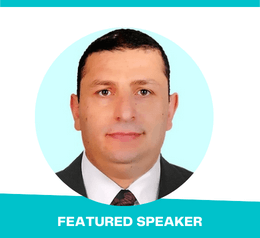Scholars Scholars World Congress on
Material Science and Engineering
THEME: "Advances in Material Science and Engineering"
 23-24 May 2022
23-24 May 2022  ONLINE & VIRTUAL
ONLINE & VIRTUAL THEME: "Advances in Material Science and Engineering"
 23-24 May 2022
23-24 May 2022  ONLINE & VIRTUAL
ONLINE & VIRTUAL 
King Abdulaziz University, Saudi Arabia
Title: Morphological Features and Mechanical Properties of Nanofibers Scaffolds of Polylactic Acid Modified with Hydroxyapatite/Cdse for Wound Healing Applications
Hoosam Donya working as associate professor in physics department (Medical physics Program) at King Abdulaziz University, Jeddah Saudi Arabia. Also, hold same staff position at Menoufia University, physics department, Shebin Elkoom, Egypt. He participated in many international conferences as a committee member and keynote speaker like ICRM2020, IRPA Congress 2014,.etc. Hossam has more than 25 ISI journal publications and 2 book chapters. He has expertise in nanocomposite fabrication for optoelectronics and radiation detection applications; investigation new treatment materials and methods for breast cancer using flow cytometry analysis and radiotherapy; investigation of thermoluminescent dosimeters for medical physics application; investigation of ion bombardment for nuclear track detector for technological applications; theranostic particle investigations; Wound Healing Applications.
Ternary nanocomposites, including graphene oxide (GO), hydroxyapatite (HAP), and cadmium selenite (CdSe) have been encapsulated into nanofibrous scaffolds of polylactic acid. These compositions were indexed as HAP@PLA (C1), CdSe@PLA (C2), HAP/CdSe@PLA (C3), HAP/GO@PLA (C4), and HAP/CdSe/GO@PLA (C5). Structural confirmation is executed by XRD and XPS techniques, while FESEM performs morphological characteristics. CdSe and GO dopants cause a significant increase in nanofiber diameter, HAP/GO@PLA (C4), showing thin surface fibers with fiber diameter up to 3.1 ?m, followed by HAP/CdSe/GO@PLA (C4) composite that belongs to filament size up to 2.1 ?m. On the other hand, the mechanical properties reveal that the dual dopant composites HAP/CdSe@PLA (C3) and HAP/GO@PLA (C4) hit the maximum tensile fracture values with 1.49 ± 0.3 and 0.99 ± 0.2 MPa. Further, the ternary C5 composite represents the lowest contact angle of 86.1 ± 3.7°. The antibacterial activity increased from 32.4 ± 9.7 and 28.4 ± 6.5% to be 85.3 ± 4.6 and 88.1 ± 5.6% for C1 and C5, respectively, against both E. coli and S. aureus in dark conditions. Moreover, the antibacterial potency enhanced from 75.4 ± 7.6 to be 83.5 ± 6.5 from dark to light conditions against E. coli for the composition of PLA containing the binary composition of HAP/CdSe.